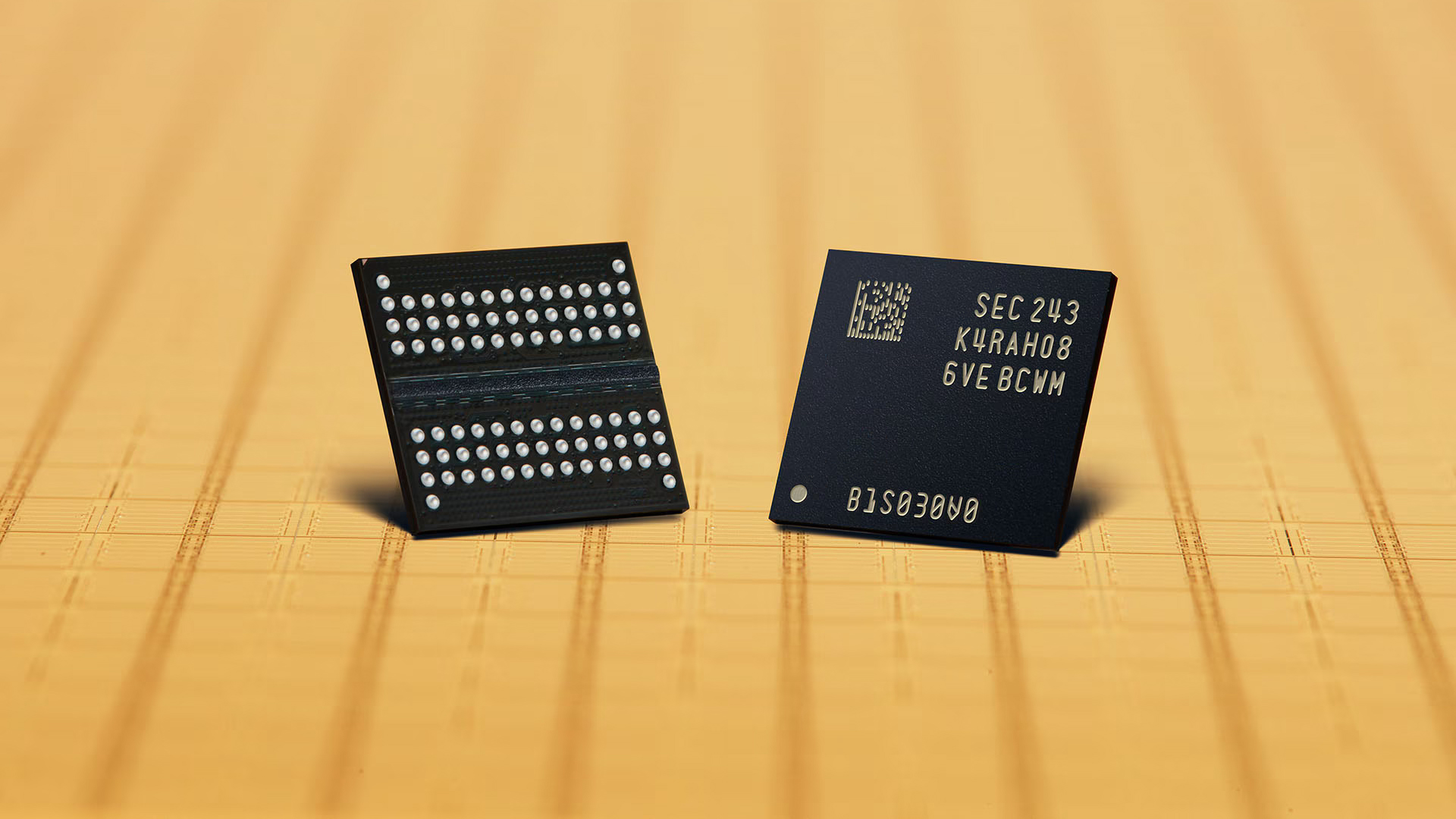OpenAI's Stargate project to consume up to 40% of global DRAM output — inks deal with Samsung and SK hynix to the tune of up to 900,000 wafers per month

Samsung and SK hynix have inked preliminary agreements to supply memory to OpenAI’s massive Stargate data center initiative, reports Reuters. Instead of actual tested and packaged DRAM chips or HBM stacks, the companies will supply Stargate undiced wafers, according to Bloomberg, which highlights the vast volumes of memory and other components that Stargate needs. For now, it looks like Stargate could consume nearly half of global DRAM output.
Both Samsung and SK Hynix confirmed that OpenAI's anticipated demand could grow to 900,000 DRAM wafers monthly, which is an incredible volume that may represent around 40% of total DRAM output. The deal likely includes various types of memory, including commodity DDR5 and specialty HBM memory for AI processors. What remains to be seen is which company will dice the wafers and build actual DRAM chips, HBM stacks, and memory modules.
To put the 900,000 DRAM wafers number into context: global 300mm fab capacity is projected to reach 10 million wafer starts per month (WSPM) in 2025, according to TechInsights. DRAM capacity — which includes both commodity DDR5 and LPDDR4/LPDDR5 as well as premium HBM, and specialty DRAM types — accounted for a 22% share (2.07 million WSPM) in 2024. Analysts predict that DRAM capacity could grow by 8.7% in 2025 to around 2.25 million WSPM, which means that Stargate plans to consume 40% of it.
Stargate — controlled by OpenAI, Oracle, and SoftBank — aims to build multiple huge AI data centers globally. These facilities will require an enormous number of servers (each containing hundreds, if not thousands, of chips, including state-of-the-art compute GPUs like Nvidia's Blackwell), cooling equipment, and power delivery equipment. In addition, these data centers could even require dedicated power plants to feed them. As a result, Stargate executives, such as OpenAI's Sam Altman, are touring around the world to secure strategic supply contracts and partnerships, including those across the Asia-Pacific region.
In addition to the memory wafer supply deal, Samsung companies are mulling other wide-ranging partnerships with OpenAI.
Samsung SDS will collaborate with OpenAI on the architecture and operation of the Stargate AI data centers in Korea. The company will also offer consulting and integration services for businesses aiming to incorporate OpenAI’s models into internal systems. Additionally, Samsung SDS has secured a reseller role for OpenAI services in South Korea and plans to help local firms adopt ChatGPT Enterprise.
Samsung C&T and Samsung Heavy Industries will work with OpenAI to develop floating data centers that improve cooling efficiency and cut emissions. While these facilities remain technically challenging to build, Samsung's maritime and construction units plan to leverage their engineering capabilities to address those limitations.
Get Tom's Hardware's best news and in-depth reviews, straight to your inbox.
Follow Tom's Hardware on Google News, or add us as a preferred source, to get our up-to-date news, analysis, and reviews in your feeds. Make sure to click the Follow button!

Anton Shilov is a contributing writer at Tom’s Hardware. Over the past couple of decades, he has covered everything from CPUs and GPUs to supercomputers and from modern process technologies and latest fab tools to high-tech industry trends.
-
hotaru251 and just like that...demand has been generated thus price go up udner guise of that need to screw the average consumer once again.Reply -
Roland Of Gilead Replythese data centers could even require dedicated power plants to feed them
Well, something has to be done like this and quick. It's general consumers who are footing the bill for these data centers. In my country, data centers consume approx 20-25% of our electricity supply of the entire country. This is growing year on year. -
j1mm4 I would call you a terrible writer if you actually ever bothered to write your own articles, instead of handing it off to AI. What a loser and disgrace to journalism. Can't even be bothered to pretend to be interested in topics that make up your jobReply -
MosephV Reply
Perhaps AI can help with ensuring you take your meds every day? Take deep breaths dude...j1mm4 said:I would call you a terrible writer if you actually ever bothered to write your own articles, instead of handing it off to AI. What a loser and disgrace to journalism. Can't even be bothered to pretend to be interested in topics that make up your job -
usertests Reply
Perhaps you should scale it back to 2 pizzas, and buy up some RAM on ebay.JRStern said:I am going to eat up to 40 pizzas for lunch today. -
blacwin22 Why did they have to call it the Stargate project?Reply
I got the notification from my google news feed and clicked it before reading Tom's Hardware thinking there was news for the supposed new show......damn these companies and there project titles...... -
j1mm4 Reply
It's called an alarm sweetie, did you forget your meds cos you tried to hand everything to AI??MosephV said:Perhaps AI can help with ensuring you take your meds every day? Take deep breaths dude...